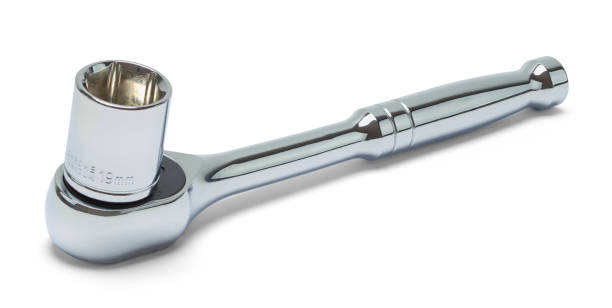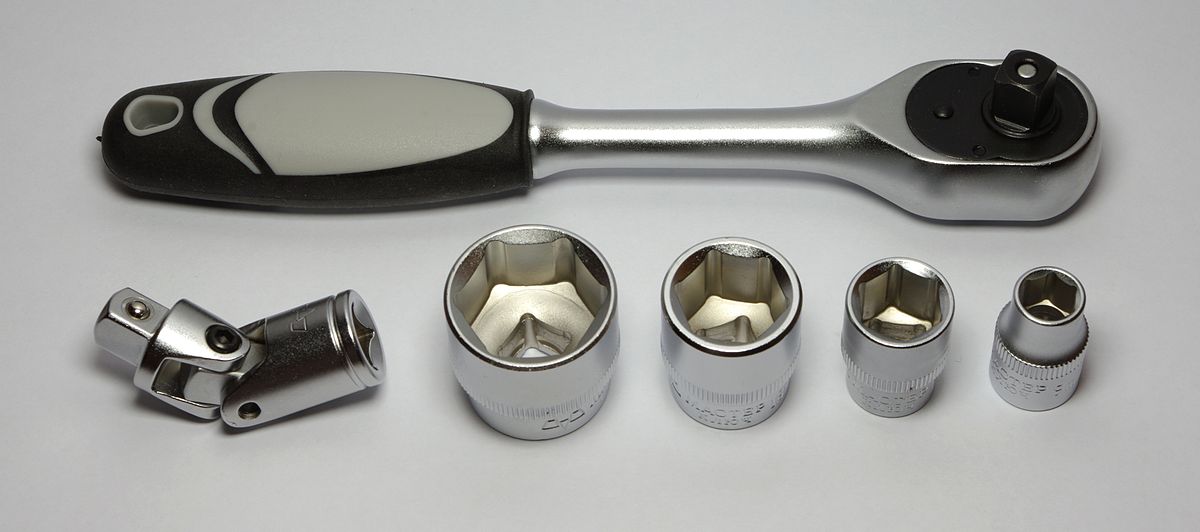From the smallest to the largest, understanding the size order of socket wrenches is a key step in mastering the art of fixing and assembling. If you’ve been wondering what is the size order of socket wrenches then you’re in the right place! In this comprehensive guide, we’ll go through the different size order of socket wrenches.
Table of contents
What Is A Socket Wrench?

A socket wrench, also known as a ratchet, is a hand tool designed for turning nuts and bolts. It consists of a handle with a ratcheting mechanism and a set of interchangeable sockets that fit onto the tool’s driving square. This versatile tool allows for efficient tightening or loosening of fasteners in various applications, offering flexibility with different socket sizes and types. Socket wrenches are a fundamental part of any toolkit, finding use in automotive repairs, construction, and countless other tasks that involve securing or removing nuts and bolts.
What Is The Size Order Of Socket Wrenches?

Socket wrench sizes typically follow a numerical order, both in metric and imperial systems. The sizes are commonly measured in millimeters for metric and inches for imperial. Below is a general sequence:
- Smallest Sizes:
– Metric: 4mm, 5mm, 6mm, etc.
– Imperial: 3/16″, 1/4″, 5/16″, etc.
- Intermediate Sizes:
– Metric: 10mm, 11mm, 12mm, etc.
– Imperial: 3/8″, 7/16″, 1/2″, etc.
- Larger Sizes:
– Metric: 17mm, 18mm, 19mm, etc.
– Imperial: 9/16″, 5/8″, 11/16″, etc.
The sizes continue to increase incrementally as needed for various applications.
How To Choose The Right Socket Wrench For A Bolt?
Choosing the right socket wrench for a bolt involves a few key steps:
- Determine Bolt Size:
– Measure the bolt’s diameter to identify the correct size. For metric bolts, use millimeters; for imperial bolts, use inches.
- Match Socket Size:
– Select a socket that matches the measured size. It should fit snugly onto the bolt without play.
- Consider Depth:
– If the bolt is recessed, choose a deep socket. For bolts in more accessible locations, a standard or shallow socket may suffice.
- Check Drive Size:
– Ensure the socket matches the drive size of your socket wrench. Common drive sizes are 1/4-inch, 3/8-inch, and 1/2-inch.
- Account for Type:
– Some bolts may require special sockets, such as six-point (hex) or twelve-point sockets. Choose the appropriate type based on the bolt’s design.
- Use Extensions if Needed:
– If the bolt is in a deep or hard-to-reach place, use socket extensions to reach it comfortably.
What Is The Standard Size For Socket Wrenches?
Socket wrenches come in various standard sizes, both in metric and imperial systems. The most common drive sizes for socket wrenches are 1/4-inch, 3/8-inch, and 1/2-inch. These sizes refer to the square drive on the socket wrench that connects to the sockets.
- 1/4-Inch Drive: Smaller and typically used for lighter tasks. Common in precision work and smaller fasteners.
- 3/8-Inch Drive: A versatile size suitable for a wide range of applications. Strikes a balance between strength and versatility.
- 1/2-Inch Drive: Larger and more robust, suitable for heavier-duty tasks. Often used in automotive and industrial applications.
These drive sizes determine the sockets and accessories that are compatible with the respective socket wrench.
How To Organize And Store Socket Wrench By Size
Organizing and storing socket wrenches by size can help you maintain an efficient and easily accessible toolkit.
- Use a Toolbox or Socket Organizer: Invest in a toolbox or a dedicated socket organizer. Many organizers have labeled slots for each size, making it easy to spot and retrieve the right socket.
- Arrange in Sequential Order: Organize your sockets in sequential order by size. This can be from smallest to largest or vice versa. Consistency in order makes it easier to find the right size.
- Label or Color-Code: Consider labeling each slot with the corresponding size or color-coding the sockets. This visual cue speeds up identification.
- Separate Metric and Imperial: If you have both metric and imperial sockets, keep them separate. This prevents confusion and ensures you grab the correct size for the job.
- Utilize Socket Rails or Clips: Socket rails or clips can be mounted on walls or placed in toolboxes. They provide a secure and organized way to store sockets.
- Keep Deep and Shallow Sockets Separate: If you have both deep and shallow sockets, organize them separately. This helps when you need a specific type for a particular job.
Frequently Asked Questions
The most common drive sizes for socket wrenches are 1/4-inch, 3/8-inch, and 1/2-inch.
To choose the right socket wrench size for a bolt, measure the bolt’s diameter and select a socket that matches.
While it’s possible, it’s generally not recommended for precision work. Mismatched sizes can lead to rounding or damaging fasteners. It’s best to use the correct socket size for the bolt system.
Deep sockets have a longer reach and are suitable for recessed bolts. Shallow sockets are standard and work well for bolts in inaccessible locations. The choice depends on the specific needs of the task.
Yes, there are specialized socket wrench sets designed for various industries, such as automotive, construction, and aviation. These sets may include specific sizes and types tailored to the demands of the industry.
Conclusions
Understanding the size order, selecting the right socket for a task, and maintaining an organized storage system enhance the efficiency and enjoyment of your work.
References
- electronicshub.org – Socket Size Chart
- home.howstuffworks.com – A Guide to Socket Sizes
- yardandgardenguru.com – Socket Sizes in Order from Smallest to Largest
Recommendations
- How Big is 10 Acres of Land? (Visual Examples for Comparison)
- How Many Months is 60 Days? (Explaining the Calculation Process)
- How Big is 5 Inches? 6 Items with Accurate Measurement
- How Long Are Menards Rebates Good For?
- How Tall Is All Might? Everything To Know About Hero Academia
- How Tall is Kevin Gates? Everything about the Rapper
- How Long Are HS Football Games? (Explained)
- How Tall is Trippie Redd? Everything About the Rapper





